Regardless of the reasons you are seeking the best dairy-free milk alternatives for matcha lattes, this article will help you make a good choice, without having to spend hours of experimentation on your own.
While there are many great non-dairy options, the best choice for you depends on your personal criteria, which may simply be based on the taste, color, and texture when using different kinds of milk.
Or, you may also be factoring in common health considerations, or even food safety considerations, when determining the best kind of milk to use, aside from its unique nutritional value.
Jump to:
Best Dairy-Free Milk Alternatives for Taste, Color, and Texture

I chose three different types of plant-based milk to assess their taste, color, and texture. I then based my testing on the following criteria:
Taste
Does the taste complement or compete with the flavor of green tea powder? A good milk of choice is either neutral in taste or adds a gentle sweetness to the unique flavor of matcha.
Color
Does the color of the milk enhance or muddy the vibrant green color of matcha green tea? On its own, each of the possible milk alternatives may appear to be white in color, similar to regular dairy milk.
When compared side-by-side, you can see how the color of different types of milk varies widely. A darker milk will turn the color of a matcha mixture from a beautiful green to an unappetizing green. A bright white color creates a beautiful contrast with the green matcha tea and even lightens the dark green tea powder in a pleasing way.
Texture
Does the milk option create a creamy texture or a lighter texture? Generally speaking, the milk options with a higher fat content will create that creamy velvety texture, while a lower fat content will create a lighter texture.
Either option makes a perfect matcha latte, so this aspect is really a personal preference. A creamy velvety texture is great during colder months and a lighter texture may be more preferable in the warmer months.
| Type of Milk | Color | Taste | Texture | Recommended |
|---|---|---|---|---|
| almond milk | bright white | neutral | light | yes |
| coconut milk | bright white | slightly sweet coconut flavor | creamy/velvety/smooth | yes |
| cashew milk | tan | slightly nutty | creamy/velvety/smooth | maybe |
| cow's milk (baseline) | white | dairy | somewhat creamy | --- |
All in all, I would recommend almond milk for the best color and a lighter texture. Coconut milk would be the second choice for its richer texture, assuming you enjoy the coconut flavor. It can be a nice alternative or even a complement to using vanilla extract in this simple vanilla matcha latte recipe.
Which Dairy-Free Milk Alternatives Are Best for Frothing?
Another important aspect of choosing the best milk for making a matcha latte pertains to frothing.
1. How easy it is to froth the milk using ordinary kitchen equipment?

Since lattes are most commonly made using cow's milk, I included it in my test as a baseline for comparison. I then included almond milk, coconut milk, and cashew milk as my test candidates. To my surprise, cow's milk did not produce the best results when compared to its plant-based counterparts!
When frothing the milk with a whisk, all four options frothed quickly and easily, but the almond milk seemed the least performing. If you're wondering whether the type of whisk makes a difference, here's a guide to the best whisks for making matcha lattes.
2. How long does the milk froth retain its form before deflating?
To test how long the froth retained its form over time, I let all four options sit for about 5 minutes.

The cow's milk and the cashew milk were the most disappointing, as all the froth was nearly gone. On the other hand, the froth on the coconut milk and almond milk remained, with little to no loss in volume. As a matter of fact, they both held up very well when making my simple vanilla matcha latte recipe and they lasted all the way until I finished drinking them!
When it comes to the best milk option for making a frothy matcha latte, the type of milk really matters. Fortunately, the winners were also the best in taste, color, and texture!
| Type of Milk | Froths Easily | Deflates Quickly | Recommended |
|---|---|---|---|
| almond milk | yes | no | yes |
| coconut milk | yes | no | yes |
| cashew milk | yes | yes | no |
| cow's milk (baseline) | yes | yes | no |
Note: I had the off-chance of testing macadamia milk as well and was not successful in getting it to froth at all, which is why it was excluded from this post.
Best Dairy-Free Milk Alternatives Based on Health Considerations
Whether you are purposely trying to avoid dairy or not, there are other health benefits you may be targeting that will influence your choice of milk.
Avoiding Blood Sugar Spikes
Best Options
If you are diabetic, pre-diabetic, or trying to prevent any degree of metabolic syndrome, being selective about the types of milk you consume is an effective way to maintain a healthy blood sugar level.
- Almond milk is a great option that helps keep blood sugar stable. It also has the potential for improving insulin resistance.
- Cashew milk is another good option for keeping blood sugar stable and is thicker and creamier than almond milk. Since cashew milk does not froth well, use it as a "creamer" for your matcha instead.
- Coconut milk is a good alternative if used in moderation. Since it's high in saturated fat, it may lower your insulin sensitivity over time.
Worst Options
- Oat milk is one of the worst options for avoiding blood sugar spikes because the process of making oat milk breaks down the carbohydrates into sugar to create a creamy texture.
- Rice milk is also not a good option because it is high in carbohydrates, which quickly convert into sugar, and has no protein or fiber to slow down the absorption.
Consuming a cup of matcha tea latte in the morning, with little to no sugar, can be a great start to your day. In contrast, drinking a cup of matcha, loaded with sugar, can adversely affect your mood and concentration throughout the rest of your day.
Avoiding Nut-Based Milk
If you have a nut allergy, there are still a couple of good options for you to consider.
- Hemp milk has a similar consistency to almond milk but has a stronger flavor and slightly grassy taste. You may find it agreeable when paired with the earthy flavor of matcha green tea. Since hemp milk was not available in my grocery store, I was not able to include this option in my recipe testing. If you give this one a try, please leave me a comment and let me know what you think!
- Coconut milk - if you are not allergic to coconuts, and enjoy the taste of coconut, this is a good option for you.
Avoiding GMOs and Glyphosate
As a certified nutrition coach, I tend to discourage food sources that are genetically modified (GMO) due to their unknown health implications. In addition, GMO food sources are commonly treated with glyphosate, which is a broad-spectrum herbicide known to be harmful to human health. "The Harmful Effects of Glyphosate, The Most Common Agrochemical" is a great read if you would like to learn more.
If you are avoiding GMO products, then I would not recommend using soy milk, unless you can locate a product that is verified by the Non-GMO Project.
Conclusion
Once you've determined the best dairy-free milk alternative for you, it's time to enjoy a delicious matcha latte in the comfort of your own home! All you need is a simple vanilla matcha latte recipe to get you started!
Top Tip
When frothing any type of milk, it is best to first heat the milk to about 160 degrees Fahrenheit to create a finer, smoother, more latte-like consistency.
Recipe
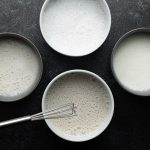
Best Dairy-Free Milk Alternatives for Matcha Lattes
INGREDIENTS
- 1 cup non-dairy milk
INSTRUCTIONS
- Add 1 cup of non-dairy milk to a small saucepan and heat to about 160℉.
- Whisk the milk until a frothy, foam-like consistency forms.
- Pour the frothed milk into a hot cup of matcha tea.

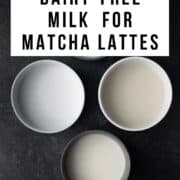
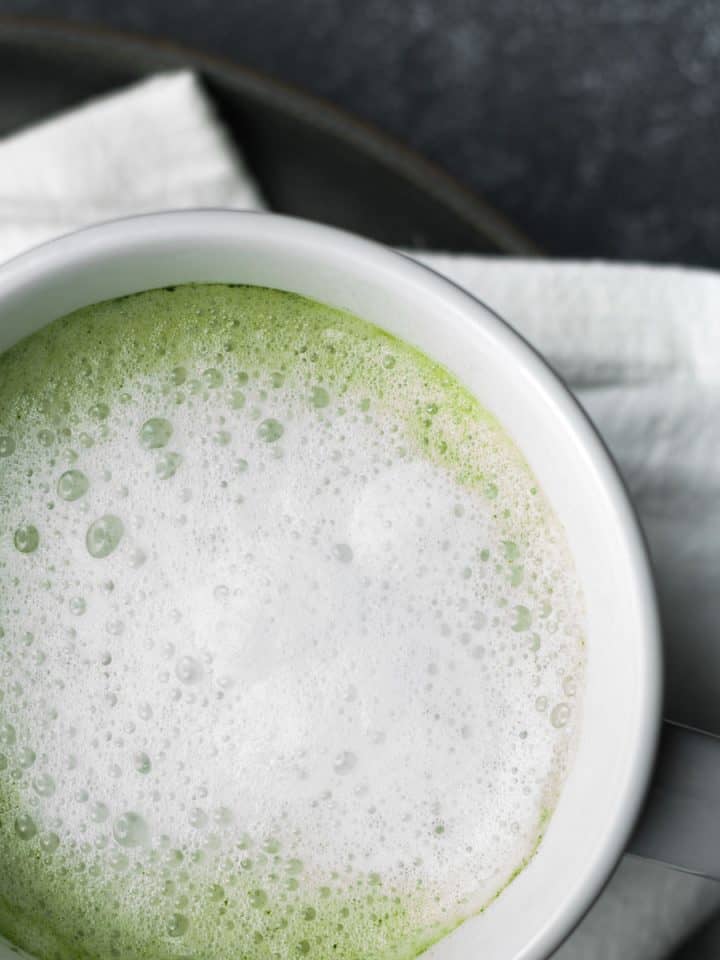
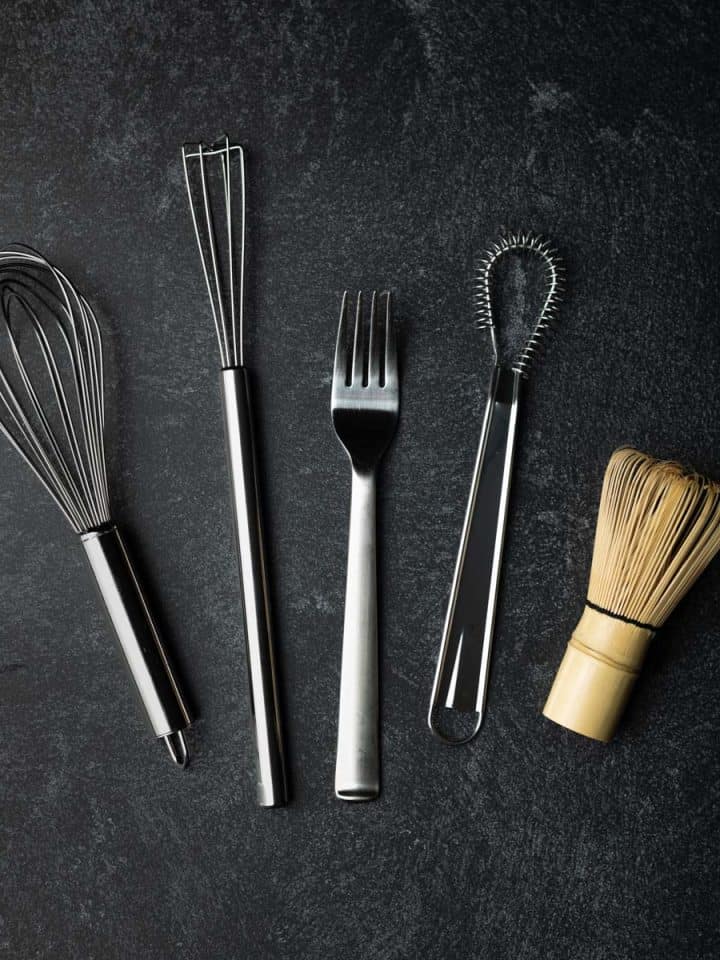

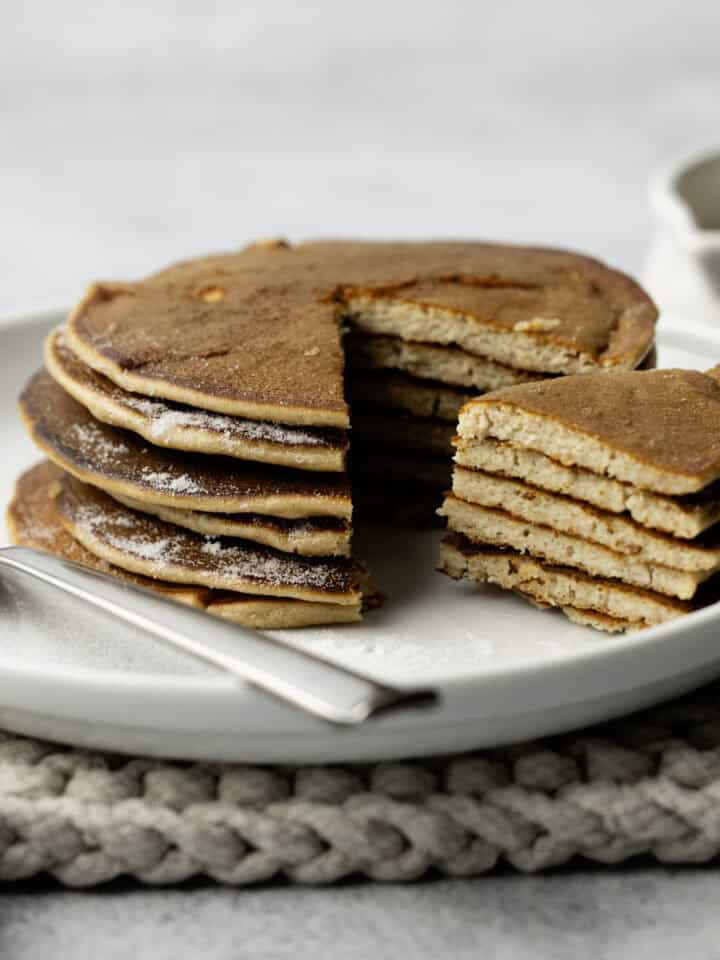
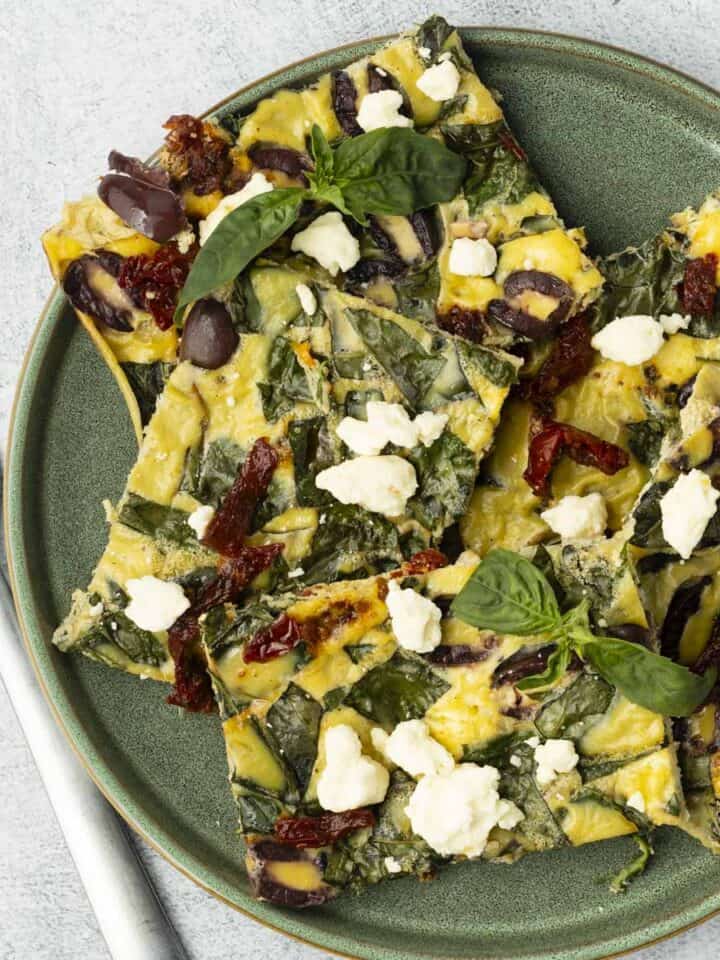
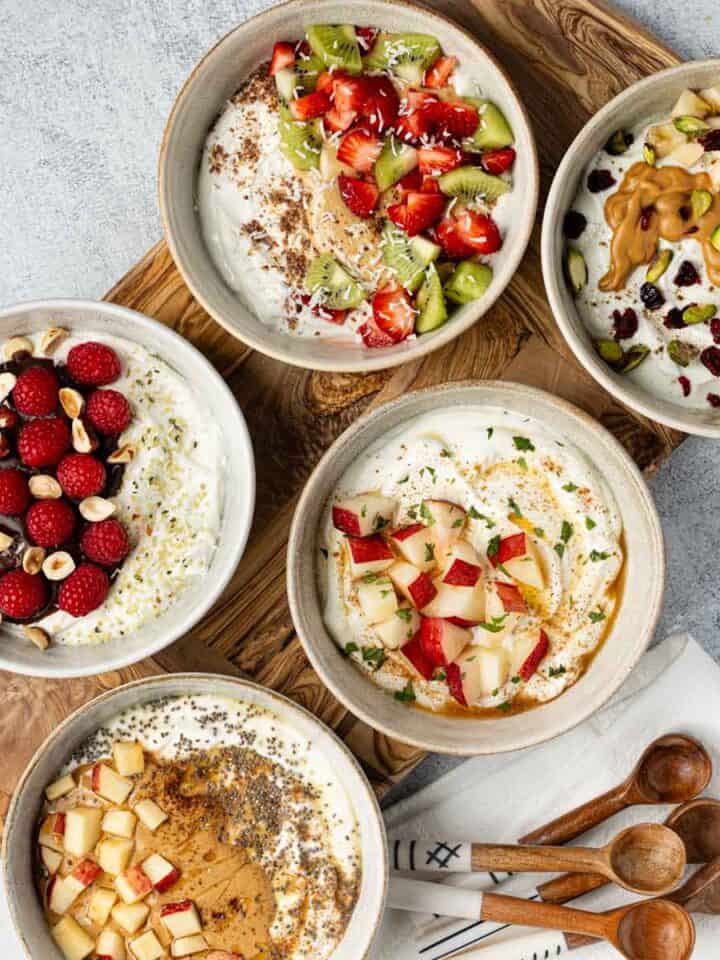
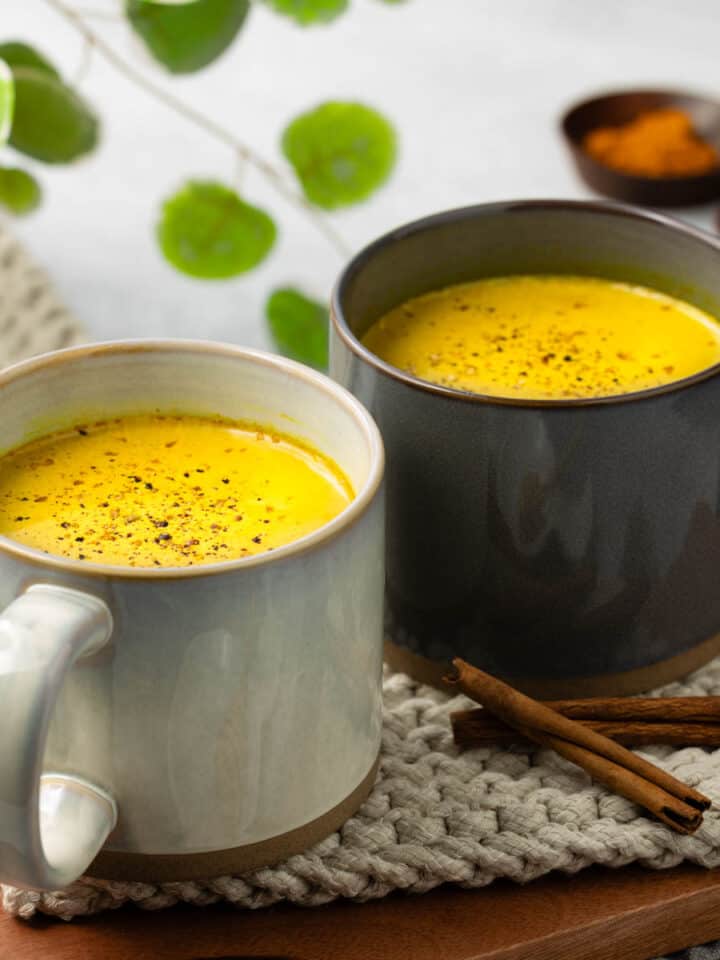
Lucille says
This article helped me decide which milk to use. I am lactose-intolerant, so I was looking for substitutes. I tried all four of them, and I personally thought almond milk went best in my matcha latte. It has a mild flavor that goes well with the matcha. Coconut milk was my second favorite, but I would definitely recommend almond milk.
Elcy Wang says
Glad you found this article helpful, Lucille! Thanks for your comments.